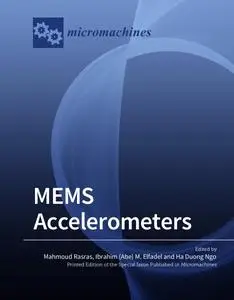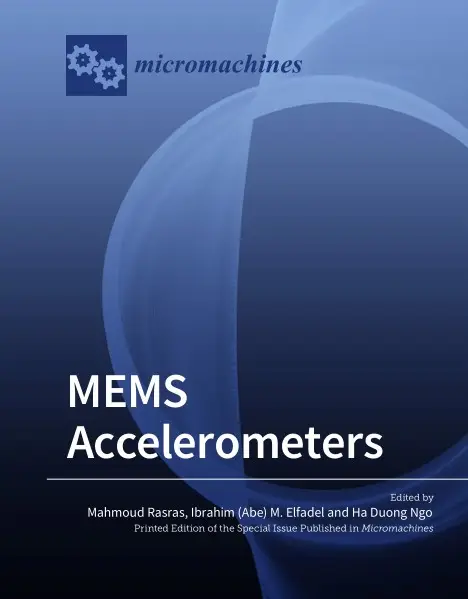MEMS Accelerometers by Mahmoud Rasras
English | PDF | 2019 | 254 Pages | ISBN : 3038974145 | 36.35 MB
Micro-electro-mechanical system (MEMS) devices are widely used for inertia, pressure, and ultrasound sensing applications. Research on integrated MEMS technology has undergone extensive development driven by the requirements of a compact footprint, low cost, and increased functionality.
Accelerometers are among the most widely used sensors implemented in MEMS technology. MEMS accelerometers are showing a growing presence in almost all industries ranging from automotive to medical. A traditional MEMS accelerometer employs a proof mass suspended to springs, which displaces in response to an external acceleration. A single proof mass can be used for one- or multi-axis sensing. A variety of transduction mechanisms have been used to detect the displacement. They include capacitive, piezoelectric, thermal, tunneling, and optical mechanisms. Capacitive accelerometers are widely used due to their DC measurement interface, thermal stability, reliability, and low cost. However, they are sensitive to electromagnetic field interferences and have poor performance for high-end applications (e.g., precise attitude control for the satellite). Over the past three decades, steady progress has been made in the area of optical accelerometers for high-performance and high-sensitivity applications but several challenges are still to be tackled by researchers and engineers to fully realize opto-mechanical accelerometers, such as chip-scale integration, scaling, low bandwidth, etc.
This Special Issue on "MEMS Accelerometers" seeks to highlight research papers, short communications, and review articles that focus on:
Novel designs, fabrication platforms, characterization, optimization, and modeling of MEMS accelerometers.
Alternative transduction techniques with special emphasis on opto-mechanical sensing.
Novel applications employing MEMS accelerometers for consumer electronics, industries, medicine, entertainment, navigation, etc.
Multi-physics design tools and methodologies, including MEMS-electronics co-design.
Novel accelerometer technologies and 9DoF IMU integration.
Multi-accelerometer platforms and their data fusion.
Without You And Your Support We Can’t Continue
Thanks For Buying Premium From My Links For Support
Thanks For Buying Premium From My Links For Support



